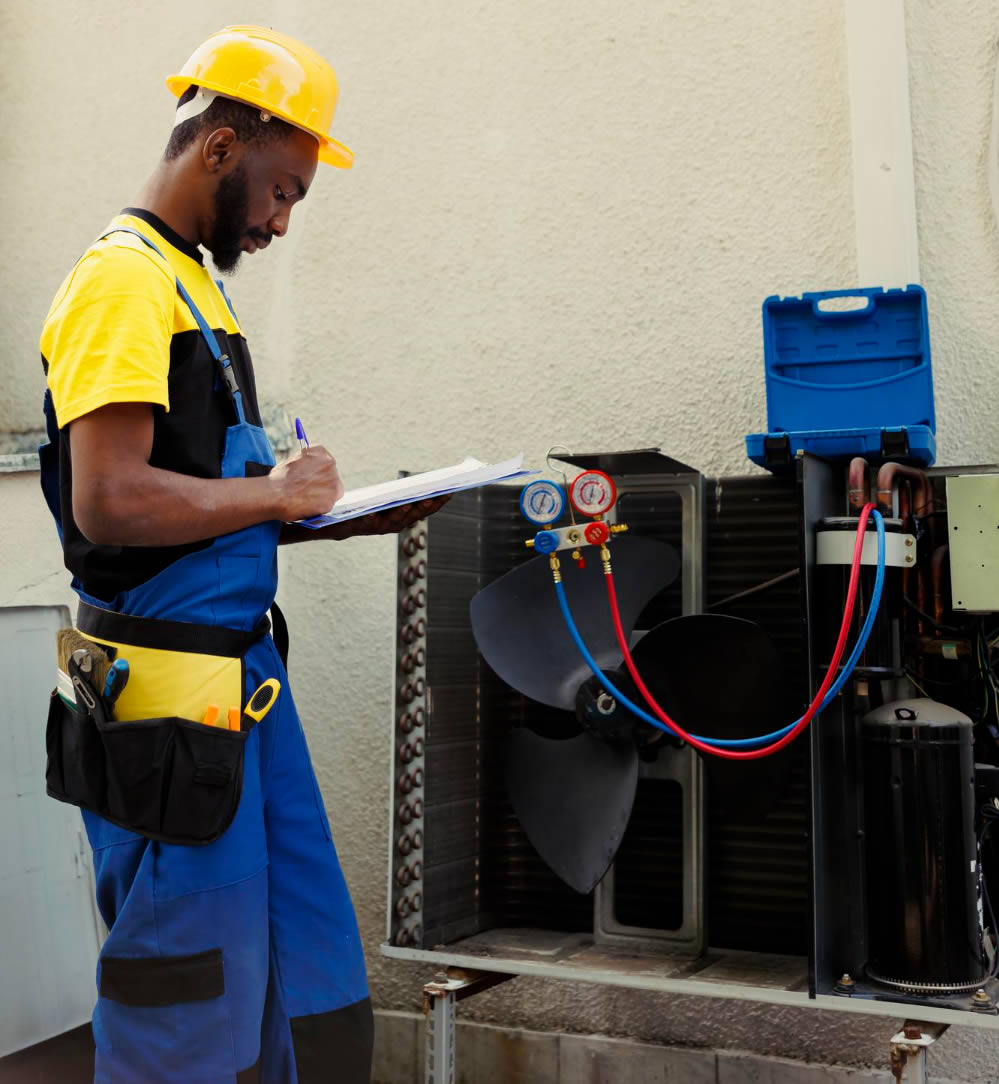Call This Saturday to Get $50 Off
4.8/5 Ratings Based on 2491
ReviewsLocally Owned & Operated
Call This Saturday to Get $50 OFF
Call This Saturday to Get $50 Off
4.8/5 Ratings Based on 2491
ReviewsLocally Owned & Operated
Call This Saturday to Get $50 OFF
When you hear the words "air conditioner", you probably think of cool air, thermostat settings, and maybe energy bills - but refrigerant rarely crosses the mind. As it turns out, refrigerant is the lifeblood of the cooling process. Without it, your air conditioner might hum and whir, but it won’t deliver on its number one job: keeping you cool.

If you’ve ever had an AC that constantly runs but never seems to cool the room, then low refrigerant could be to blame. Before you top it off like windshield fluid, let’s get into what refrigerant does, the types that exist, and common refrigerant-related problems.
We provide reliable residential and commercial heating & cooling services.
Whether you run a retail store, office building, restaurant, or industrial warehouse, you need…
Read MoreHey there, Dallas homeowners and business owners! Let’s talk about something we all know…
Read MoreHumidity is an important part of staying comfortable indoors. If your home is damp…
Read MoreIn dry seasons, the air can be crisp and unforgiving. When your humidifier stops…
Read MoreWhen was the last time you thought about your dryer vent? For most homeowners…
Read MoreWhether your HVAC issues demand a simple fix or a more serious AC repair in University Park, TX, the professionals at Aire Serv are always happy to help. Continue reading to learn more, or call Aire Serv with any of your questions or concerns. We even offer emergency repair services.
At its core, refrigerant is a fluid chemical compound that absorbs heat from your indoor air and transfers it outside. This fluid can easily boil from a liquid into a vapor and also be condensed from a vapor back into a liquid. Here's the science in a nutshell:
The first step is heat absorption. Warm air is pulled in by the AC system. That air passes over cold and refrigerant-loaded evaporator coils. As the refrigerant absorbs the heat, it evaporates from low-pressure liquid into a gas.
Next up is the heat release. The gas travels to the compressor in the outdoor unit. There, it’s pressurized to further increase its temperature. From there, it moves to the condenser coils outside, and it releases the heat into the outdoor air.
As it releases heat and cools, the refrigerants condenses back into a liquid. The cooled liquid refrigerant is sent back inside to the evaporator coil to start the cycle again.
Refrigerant isn’t just another component in your system; it’s the medium that actually does the cooling. Without refrigerant, your AC system is just a very expensive fan.
Unlike filters or belts, refrigerant doesn’t wear out over time. If your system is low on refrigerant, then it usually means there’s a leak. Here’s the thing though: adding more refrigerant without fixing the leak is like pouring water into a cracked bucket.
Refrigerants have evolved over the decades not just in terms of efficiency but environmental impact as well. If you’re considering an AC installation or even a major AC repair, it helps to know what refrigerant your system uses and what your options are. These include, but are not limited to:
If your system needs refrigerant service, then identifying the correct type is essential. Using the wrong type - or mixing refrigerants - can damage your system and even void warranties. That's just part of why HVAC service is NOT something you should DIY.
Reputable companies like Aire Serv have trained and experienced technicians and even offer great workmanship guarantees. If your system isn’t cooling properly or you're concerned about its efficiency, don’t wait. Call Aire Serv to hire a uniformed professional.